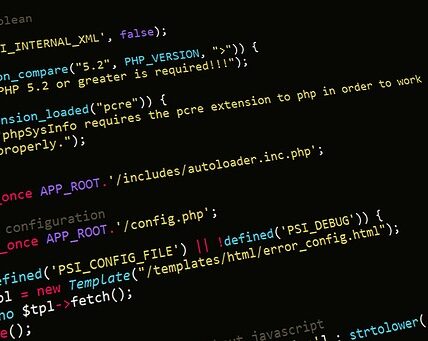With the world of web development constantly evolving and new technologies surfacing, web developers may be asking themselves: What are the advantages of using React for their projects? How is React different from other frameworks? What are some of the best uses of React?
As the online landscape continues to evolve, the pressure is on web developers to create more dynamic and interactive sites. From small business websites to large e-commerce applications, React is becoming an increasingly popular choice for web development. React is a JavaScript library that is designed to build user interfaces and enhance the user experience. Compared to other popular frameworks like Angular and Vue, React offers a lightweight, powerful, and efficient way to create stunning user experiences.
Despite its popularity, many developers are still not sure of the best way to utilize React for their web development projects. In this article, you will learn about the advantages of React, the differences between React and other popular frameworks, and some of the best uses of React. We will also explore the pros and cons of using React for different types of projects, as well as discuss some potential issues that developers should be aware of.
From dynamic front-end designs to scalability and performance, React can be a great addition to your web development toolkit. This article will help you understand why this library has become so popular and how it can be used to create powerful, interactive sites and applications.
Defining React and its Uses
React is a JavaScript library used by developers to build user interfaces for large-scale applications. It was first released in 2013 and since then has become a staple in many web development projects. React has the ability to create user interfaces quickly and efficiently, allowing developers to focus on building great web experiences for their users. React provides a set of tools that make it easier to create dynamic interactive applications.
User interfaces (UI) are the visuals of an application, like buttons and menus, that allow users to interact with it. React allows developers to create interactive user interfaces quickly and efficiently, thanks to its component-based system. Components are pieces of code that can be reused and combined in different ways. This makes it easier for developers to create consistent and dynamic user experiences.
Dynamic web experiences refer to websites or web applications that respond to user input and have a look and feel that changes depending on what the user does. React makes it easier for developers to create sophisticated websites that provide users with an engaging and interactive experience.
Server-side rendering (SSR) is the process of sending the UI of an application to a user’s browser from the server. React has the ability to pre-render the UI on the server-side, speeding up the time it takes for an application to load. This is a great way to improve the performance of a website or web application.
React is a great tool for web developers, and is one of the most popular JavaScript libraries in use today. It offers great flexibility in creating dynamic user interfaces, and makes it easier for developers to create great web experiences for their users.
The Benefits of React
Introduction to React
React is a modern and efficient JavaScript library created by engineers at Facebook and released to the public in 2013. It is used for building user interfaces (UI) and single-page applications, and is currently one of the most popular tools for creating dynamic web applications. React is designed to be fast, scalable, and simple, using an extension of the JavaScript language called JSX. It also uses a virtual DOM (Document Object Model), which improves performance by limiting the amount of data that needs to be managed when changes are made.
The Benefits of React
Using React can provide several advantages to developers compared to other frameworks. These include:
- Fast rendering: By utilizing a virtual DOM, React ensures that the time for rendering changes to the UI is minimized. This makes React applications more responsive to user actions and decreases loading times.
- High level of reusability & composition: By allowing developers to break down complex UIs into simpler components, React allows for code reuse and makes it easier to manage large codebases.
- Ease of development: React’s design is intuitive, allowing developers to easily create interactive and complex UIs. Furthermore, its design is very modular which allows for easy debugging.
React also introduces powerful tools for testing React components, called Enzyme. By utilizing these testing tools, developers can ensure that their React components function as expected and that any changes to the code do not break existing components. This helps reduce the risk of releasing buggy code into production.
Lastly, React is one of the most popular JavaScript libraries, which means that developers have easy access to resources for learning and troubleshooting. This makes React a great choice for developers who are new to web development as well as experienced developers who want to stay up to date with the latest technologies.
Developing User Interfaces With React
React is a highly popular open source JavaScript library developed by Facebook primarily used to build interactive user interfaces. It is a modern, fast, and scalable solution for developing web applications and mobile-native web applications. React is one of the most versatile libraries available in the web development community and can be used for a wide range of applications.
Creating Rich Interfaces
React provides a range of features and components to create rich interactive user interfaces. It has the ability to craft complex user interfaces like custom maps, tables, charts, and navigation menus. React provides the flexibility to create components and combine them to create great user experience. The library also provides features to help improve performance with virtual DOM and server-side rendering, which can be used to speed up loading times.
Building Cross Platform Applications
React is known for its ability to create applications that are available across different platforms. It allows developers to write code once and then re-use it on both web and mobile applications. This saves considerable development time and money and allows for a seamless experience across different devices.
React also supports creating progressive web apps (PWA) which are applications that combine the look and feel of a native app with the components of a web page. These PWAs can be deployed to a variety of devices and make use of local data to improve performance and extend the features of the application.
React also supports the development of React Native applications. These applications make use of native mobile components and are built with JavaScript and React. The applications are compiled to native code and run faster than web apps and provide a great user experience on mobile devices.
Finally, React can be used to create native mobile applications, either with native tools such as Android Studio or with React’s create-react-native-app toolkit. React Native helps developers create native apps quickly and efficiently and can be used to create high quality, performant mobile applications.
React is a highly versatile library that can be used to develop user interfaces for a variety of different applications. It offers features to quickly create complex user interfaces, build cross-platform applications, and develop native mobile applications. React is an excellent choice for any web developer looking for a modern and scalable JavaScript library.
Advanced Uses for React
React is a powerful and flexible JavaScript library that has quickly become popular sought after for web development. With its simple syntax and ability to create interactive user interfaces, React can power some of the most cutting-edge applications. Additionally, the concurrent mode of React helps build high-performance components that are capable of handling rapidly changing data with minimal code. Here we’ll explore some of the most advanced possibilities when it comes to leveraging React.
React Server Side Rendering
Server side rendering (SSR) is a powerful way to reduce page load times and improve performance. React SSR, also known as Universal JavaScript, is simply the process of rendering a React application on the server rather than in the browser. With SSR, React applications can systematically load pages faster and give a smoother experience to users. Aside from the performance aspect, it also adds SEO benefits as the content of the page is indexed beforehand. Additionally, SSR does not compromise with the React application’s features and functionalities alongside providing a better user experience.
React Native
React Native allows developers to create native apps for both iOS and Android using only JavaScript code. Developing a native app generally requires the expertise of multiple programming languages, such as Objective-C, Python, and Java. With React Native, developers can create and deploy native apps seeking help from only one language – JavaScript. These apps have the same look and feel as native apps, and offer the same performance too. Furthermore, the use of a declarative coding style ensures that developers have an easier time to keep the codebase maintainable and more organized.
React has also been a powerful tool for building progressive web applications. These applications can leverage the capabilities of the web while still feeling like a native app. Progressive web apps also take advantage of features like service workers, cache technologies, and offline support to deliver reliable and fast performance. Not only does this improve user engagement, but also the usability of the product.
Overall, React is a powerful and increasingly popular JavaScript library for web development. From server side rendering to progressive web apps, developers can leverage the power of React to improve the performance and features of their applications. Furthermore, React Native enables developers to create native apps for both mobile platforms with the use of a single language – JavaScript.
Conclusion
React, the popular JavaScript library, has made a huge splash in the web development world. With its ability to create beautiful interactive UI components, developers are finding increasingly more creative ways to utilize their potential. This begs the question, what are some of the best uses of React?
At React Academy, we aim to provide developers with all the latest news and insights into React’s ever-evolving world. Follow us to keep up to date on the latest React trends, and be sure to stay tuned for further releases.
Frequently Asked Questions:
Q: What kinds of UI components can I produce with React?
A: React offers an extensive library of components, allowing developers to create all kinds of UI elements from basic headings to intricate interactive graphs.
Q: Is React suitable for mobile applications?
A: Yes, React Native provides powerful solutions for creating mobile applications, allowing access to platform-specific hardware and services.
Q: Can I use React as a scripting language?
A: Yes, React provides powerful techniques for scripting and programming languages to quickly write small scripts with minimal effort.
Q: Is React suitable for developing websites?
A: Absolutely. React is an excellent choice for developing interactive and user-friendly web applications that run smoothly.
Q: What are some of the best uses of React?
A: React can be used to create interactive UI components, mobile apps, website development, scripting, and programming languages. It is also a powerful tool for creating user-friendly web applications that run smoothly.




